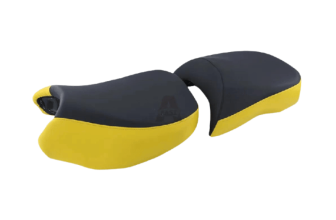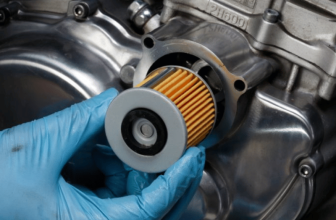Comfortable Position For A Motorcycle Handlebar
Comfortable Position For A Motorcycle Handlebar
We engage in motorcycling for diverse reasons, such as commuting, leisurely rides, travel, adventure, or sports. However, a shared passion unites us all – the love for riding and the freedom it brings. Consequently, our choice of motorcycles is tailored to our individual riding preferences and related considerations. Subsequently, we often undertake post-purchase modifications to customize the machine, ensuring optimal riding comfort and alignment with personal preferences. Hello, I’m Saleh, and in this piece, I’m sharing my insights on achieving a comfortable position for a motorcycle handlebar.
What is a motorcycle handlebar?
The motorcycle’s steering, embodied in the handlebar, stands as the pivotal component in the entire control system of the motorcycle. It empowers a rider to maneuver, manage, and navigate the motorcycle adeptly, even in the most challenging situations. Typically, the motorcycle handlebar incorporates essential control levers such as the brake, clutch, and choke lever. Moreover, in modern motorcycles, control switches are evenly distributed on both sides of the handlebar.
Consequently, one can liken the handlebar to the cockpit controller of an airship in contemporary times. The motorcycle handlebar becomes the nearest and most cherished part for a rider to grasp and navigate. Consequently, it becomes imperative to position or mount the handlebar in a way that ensures a comfortable riding experience, making it enjoyable, fun-filled, and notably comfortable even during extended hours on the road.
What is the comfortable position for a motorcycle handlebar?
The typical and fundamental placement of a motorcycle handlebar is below shoulder height and above the knees when a rider is seated on the motorcycle. However, the specific positioning varies based on the type of motorcycle, its category, intended purposes, and the rider’s physical ergonomics. Manufacturers generally adhere to the foundational principle of positioning the handlebar height within the range from a rider’s shoulder to knee.
In this context, commuter bikes, scramblers, cruisers, adventure bikes, dirt bikes, and others tend to feature handlebars positioned within this specified limit. However, certain motorcycles with aggressive styling, such as sportbikes, custom cruisers, or certain scramblers, deviate from this basic rule of handlebar placement. Consequently, riders on these motorcycles may experience a more aggressive and stylized control behavior. While this might be tolerable for short rides within local areas and feel comfortable at normal speeds, it often becomes less comfortable or tolerable during extended hours of riding.
As a result, a motorcycle rider might opt for a modification or customization of the motorcycle handlebar position, aligning it with their body physique, riding preferences, and desired comfort level. It’s worth noting that the most comfortable position for riding a motorcycle typically falls in the middle range between the rider’s shoulder and knee height. Additionally, the handlebar should be appropriately angled and aligned with the straight line of the motorcycle’s front fork or YOKE.
For individuals with shorter stature, leaning the handlebar slightly inward can provide extra benefits, though this isn’t as advantageous for taller riders. Consequently, a pipe handlebar is generally preferred. On the contrary, split-type handlebars are designed to impart aggressive riding ergonomics to the motorcycle, often at the expense of comfort. In such cases, riders have limited options for customization or personalization, a factor that they must accept and appreciate.







